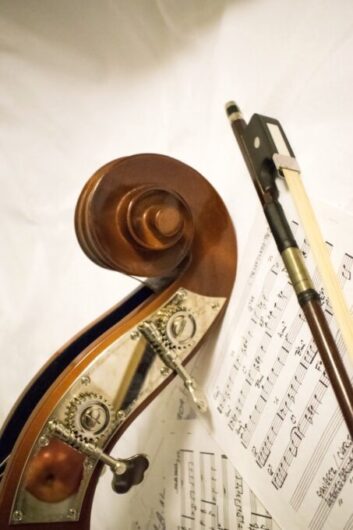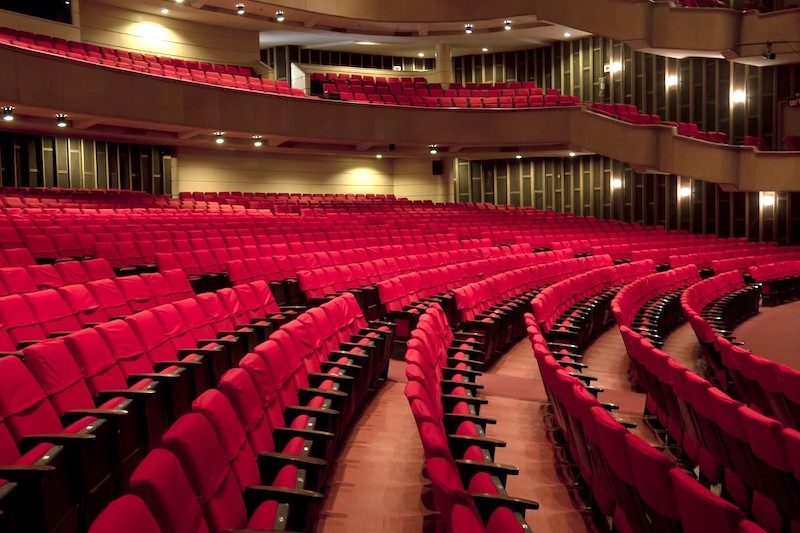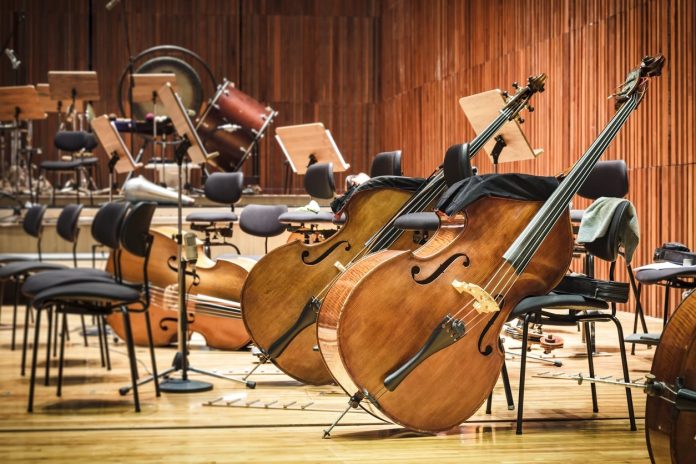For Isabella Brown and her partner Liam, an average day during the past 11 months looked something like this: sleeping-in, playing with their kitten, Penguin, and watching as the cancellations rolled in.
As casual musicians with some of Australia’s biggest orchestras, there wasn’t a lot to do while concert halls across the country collected dust.
“It was usually checking your emails and just getting sad that everything was cancelled,” said Isabella, a freelance double bassist with Orchestra Victoria, Opera Australia and Canberra Symphony Orchestra.
“If you looked at our diaries at the beginning of the year, Liam was meant to be going to Auckland four times to do concerts. I had a tour with Opera Australia which was a regional tour…then it just became very much like ‘oh we will just sit at home and twiddle our thumbs’.
“That was about $20,000- $30,000 in shows just bye, bye.”
The couple from Canberra is paying off a mortgage after purchasing a house last year. Isabella said she was lucky to be offered the JobKeeper subsidy by one of the orchestras she works for. Without it they would have had to survive on a small stream of income from online teaching.
“We would have been eating a lot of rice,” she said.
Crucial year for the arts industry
A leading academic from the University of Melbourne said 2021 will be the “crunch year” for professional artists and arts institutions across Australia, after COVID-19 shutdowns caused widespread disruptions to the industry.
Dr Paul Rae, Associate Professor in Theatre Studies in the University’s School of Culture and Communication, said the sector had been “uniquely badly” impacted due to the casualised nature of the workforce, and may not recover as quickly as other industries.
“It was like a body-blow that a lot of people would really struggle to pick up the pieces from,” he said. “It’s not as tightly structured as something like the hospitality sector…so many things are on a contingent or short-term basis.
“Things are constantly having to be stitched together.”
Dr Rae said it took enormous amounts of work to put particular projects together, and once gone it was not easy to “just put them back together the same again”.
“For many professional artists, it will be the crunch year,” he said.
Just over one in five payroll jobs in the arts and recreation sector were lost in March and June last year, making it the most heavily impacted industry during the start of lockdown, according to the Australian Bureau of Statistics. Job vacancies in the sector also dropped by more than 95 per cent during these months reflecting the closure of venues and cancellation of events.

Performing arts institutions, museums and galleries have been hit especially hard said Dr Rae. Isabella agrees.
“It’s hard. I think for a lot of orchestras if it doesn’t happen in 2021 then it probably won’t,” she said. “I know with the Canberra Symphony, if they aren’t able to put on their concerts, they won’t have enough money to do anything else. That’s it.
“They’re on their last legs.”
For Willoughby Symphony Orchestra on Sydney’s North Shore, COVID-19 restrictions meant the immediate cancellation of all live concerts between March and August.
Annette Brown, the orchestra’s operations coordinator, phoned every patron to personally tell them concerts were cancelled.
It was not all bad news though. The orchestra and its musicians had a lifeline: a new Facebook page through which audiences could watch recordings made by the orchestra’s musicians.
“Patrons were very generous and they donated a lot of their tickets. From that pool of money we could pay musicians to create content to put onto the orchestra’s Facebook page,” said Annette.
“For the orchestra to remain current we needed recordings. This was going to be a way for the orchestra to remain in touch with the rest of its community.”
Willoughby Symphony is the only community and semi-professional orchestra in Australia entirely funded by its local council, Willoughby City Council. The 100-piece orchestra is based in Chatswood’s Concourse and meets to rehearse or perform at least 50 times a year.
Despite patron’s support, Annette said the loss in revenue for the orchestra was “huge” and still being calculated as Ticketek continued to process refunds for cancelled concerts.
“I don’t think we are going to feel the full impact for many months to come,” she said. “We still don’t know what the landscape is going to be like.”
What does the future of arts in Australia look like?
Dr Rae said he believes the pandemic has been a time of reflection for artists and arts organisations: a pause-for-thought which will shape the future of the industry.
“Those artists and arts organisations that have had the capacity to do so have had time for reflection they may not normally have,” he said. “While we could talk about ‘oh well one expects to see more digital or hybrid content’, one expects COVID-safe regulations to continue to shape how audiences experience live art works.
“Perhaps the most durable impact will be around how people process and use this pause for thought that they have had to confront.”

Since February, NSW Health restrictions allow entertainment venues to be booked up to 75 per cent capacity for seated events in Greater Sydney.
With restrictions easing, Willoughby Symphony is re-thinking the nature of its live performances. The orchestra is “desperately” trying to do small, one-hour concerts to keep its players and audience members safe, but Annette said the road forward will look quite different.
“With these little one hour concerts you can keep people distant, but you can’t do a whole orchestra so you can’t do some of those beautiful big lush programs we all love hearing and being part of,” she said.
“You have to be really creative and take the orchestra out of the concert hall and make them aware of what a fabulous asset it is. You have to do more outdoor performances, and you have to make it accessible to different audiences.
“It’s going to be many, many months, if not years, until we can go back to what was the traditional model.”
An Australian Council for the Arts survey conducted in September revealed that audiences are more comfortable attending outdoor performances than indoor ones. Just over 80 per cent of respondents said they felt “at least somewhat comfortable” attending performances in outdoor amphitheatres compared to 67 per cent in large theatres or concert halls.
Both numbers have risen since July suggesting people are feeling more confident about returning to live performances.
Back in Isabella’s lounge room, the doorbell rings. Penguin, the cat scurries behind her.
“I think we are on the right track to going back to normal but it will be a rough start,” she said.
With a grin, Isabella gives a thumbs-up to the screen. “It’s been a weird year but it will get better, right?”


